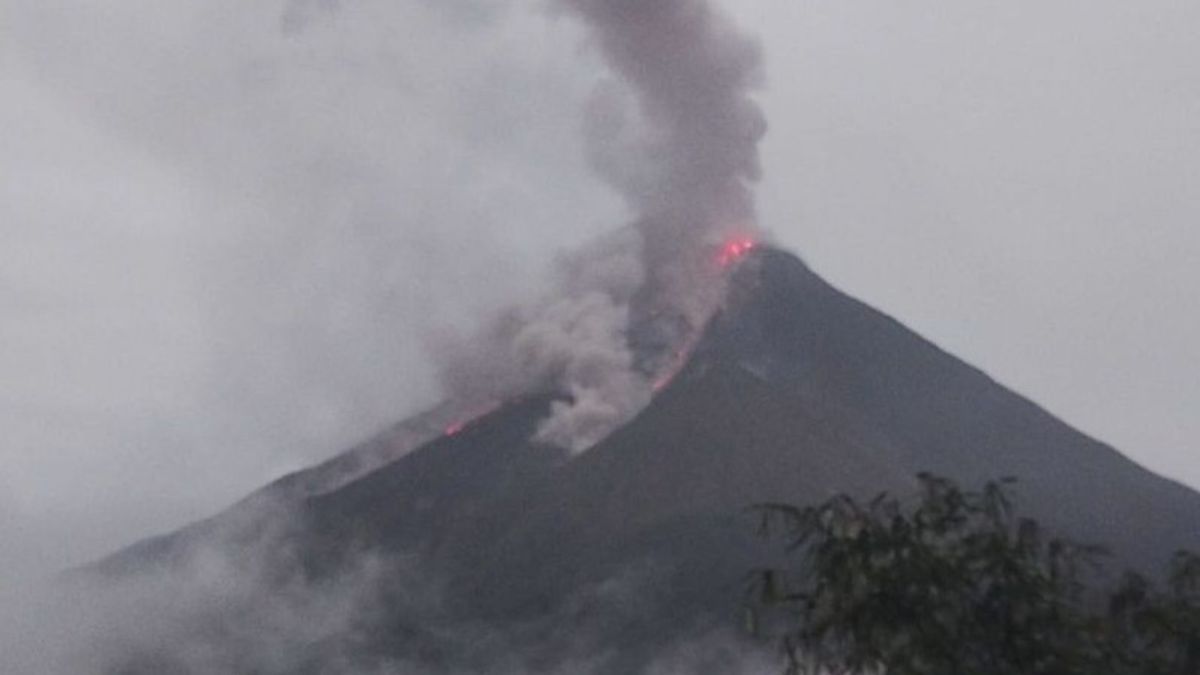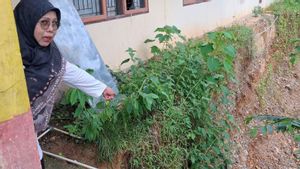The Center for Volcanology and Geological Hazard Mitigation (PVMBG) stated that Mount Karangetang on Siau Island, North Sulawesi Province, was recorded to have vomited as much as 145 million cubic meters of magma over the past two decades.
The Coordinator of the PVMBG Volcano for the Geological Agency, Oktory Prambada, said that based on the volume of the long-term eruption rate, there were 1,237 hotspots recorded through the image of the hot anomaly since 2000 until now.
"We are converting to the accumulation of magma volume as much as 145 million cubic meters from 2000 to the end of the crisis in 2019, so that if we average the output per day is 21,000 cubic meters," he said at a press conference monitored in Jakarta, Antara, Thursday, February 9.
Meanwhile, the volume of short-term eruption rates from 2018 to 2019, the accumulation of magma volumes issued for one year is 7 million cubic meters.
Oktory explained that the volume of the short-term eruption rate (2018-2019) is a fairly large accumulative magma on Mount Karangetang.
"Can this happen again this year? It is possible because in its history this volume accumulation spike also occurred in 2007, 2011, and lastly in 2019," he said.
Based on the PVMBG report, Mount Karangetang is the most active volcano in Indonesia with frequent eruptions almost every year. The characteristic eruption is an explosive eruption of strombolian type and the growth of a lava dome which is often followed by lava avalanches.
The danger of Mount Karangetang is generally caused by lava avalanches from the lava dome and secondary dangers in the form of lava.
The risk of danger is getting higher because the area around Mount Karangetang has a distance between the coastal boundary and the eruption center is only about four kilometers and in that area there are also many settlements.
Oktory said that Mount Karangetang always experienced volcanic activity in the form of earthquake dynamics which was associated with the supply of magma which occurred almost every day.
However, outputs dominated by gust earthquakes and avalanches only appeared in January 2022 until February 2023.
When the avalanche appears, then there is lava coming out of Mount Karangetang, then freezing quickly.
Seismogram masih menunjukkan peningkatan output magma pada Oktober 2022 hingga kini. Seismik mengindikasikan masih adanya pergeraksi magma dengan pemberian berupa lava, turunan, dan perempuan intensif pada Februari 2023.
The thermal satellite has not recorded a hotspot at the top of Mount Karangetang significantly. The thermal satellite still indicates a low-intensity efusion or lava flow to the surface.
Volcanic activity of Mount Karangetang is characterized by the growing lava dome which continues to increase generally in the main crater (south part). The characteristic of the eruption of Mount Karangetang is the effusive eruption or lava melting.
The phenomenon that occurs on Mount Karangetang is not the volume of volcanic ash, but smoke produced by the contact of lava flow cooling (with local rain) which reaches 400 to 500 meters above the peak.
According to Oktory, the volcanic eruption will not directly cause flight disruptions.
"There is no history of the eruption of Mount Karangetang disturbing the flight, but if we look at the plane there is a bright light, it is Siau's eternal fire," he concluded.
The English, Chinese, Japanese, Arabic, and French versions are automatically generated by the AI. So there may still be inaccuracies in translating, please always see Indonesian as our main language. (system supported by DigitalSiber.id)
Most Popular Tags
#NCP #Shin Tae-yong #Presidential Threshold #Hasto Kristiyanto #squid game 2Popular
08 Januari 2025, 01:16
08 Januari 2025, 05:00
08 Januari 2025, 04:00













